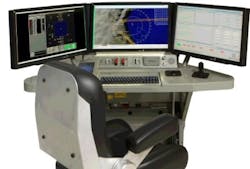Former TRW Space Park, now Northrop Grumman, designated as historic site for electronics and aerospace work
Ramo-Wooldridge diversified in the 1950s into computers and electronic components, and provided funding for Pacific Semiconductors in 1954, which was among the first to commercialize transistors for commercial sales, and five years later manufactured the RW-300, one of the first all-transistor computers with a power supply that used vacuum tubes. That company also produced scientific spacecraft such as Pioneer 1.
Thompson Products and Ramo-Wooldridge merged in October 1958 to form Thompson Ramo Wooldridge Inc., which later became known as TRW. Aviation pioneer Jimmy Doolittle, who led the 1942 U.S. bombing raid on Tokyo shortly after Pearl Harbor, was one of the company's chairmen of the board. The Aerospace Corporation is a TRW spinoff.
TRW designed the atomic-powered Pioneer 10 and 11 space-exploration satellites, and were among the first U.S. spacecraft designed with ruggedized rad-hard electronics that were able to withstand the effects of radiation in space. TRW was a longtime developer of advanced radiation-hardened electronics for space and military applications.
TRW also designed and built the descent engine for the Apollo lunar lander, as well as the instrument package for the Martian biological experiments, aboard the two Viking Landers launched in 1975, and the James Webb Space Telescope which will be the successor to the Hubble Space Telescope.
The TTL logic gate, which was the electronics industry standard for two decades, was invented by TRW's James L. Buie in 1961. In 1965, engineers Don Nelson and Dick Pick at TRW developed the Generalized Information Retrieval Language and System the U.S. Army to control the inventory of Cheyenne helicopter parts. This developed into the Pick Database Management System.
In 2002, Northrop Grumman purchased TRW, and the site is a key part of Northrop Grumman Aerospace Systems. AIAA established the Historic Aerospace Site designation in 1999 to recognize and preserve noteworthy and significant contributions made in aeronautics and astronautics.
For more information contact Northrop Grumman Aerospace Systems online at www.as.northropgrumman.com.
